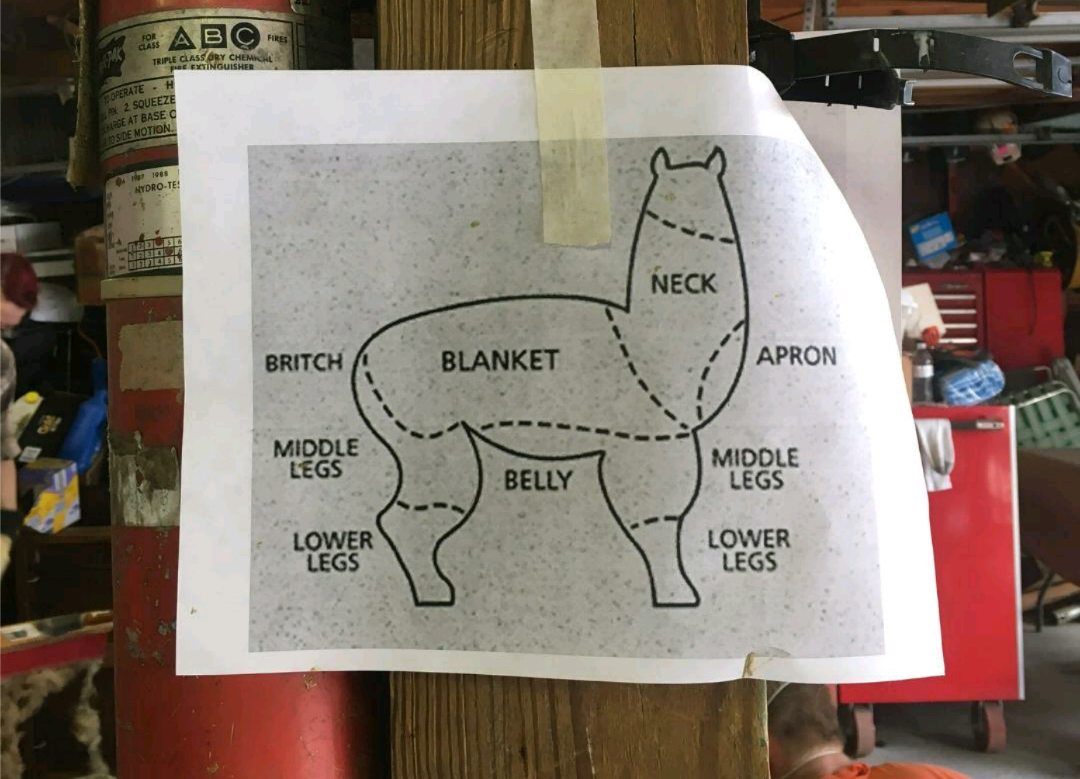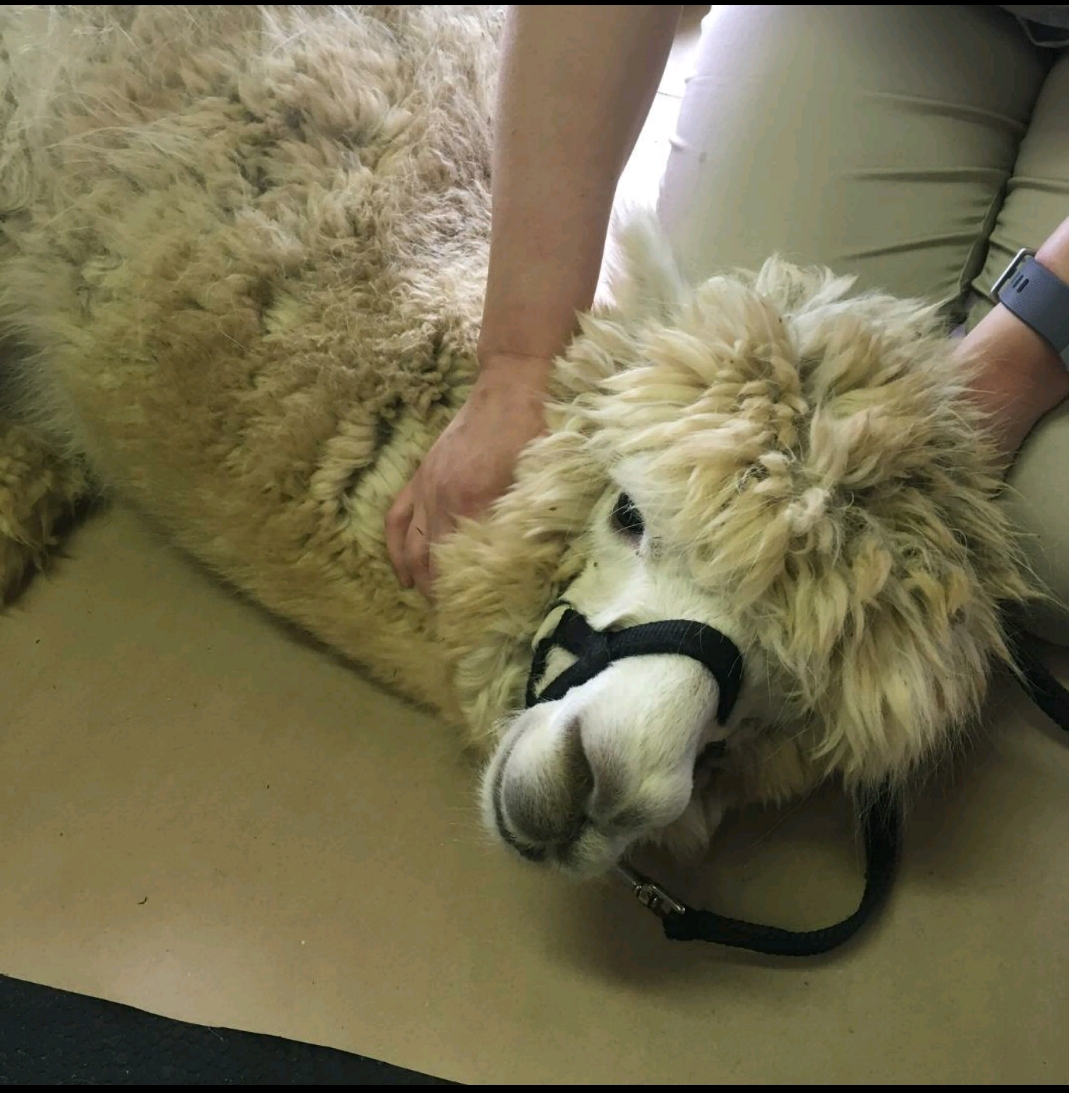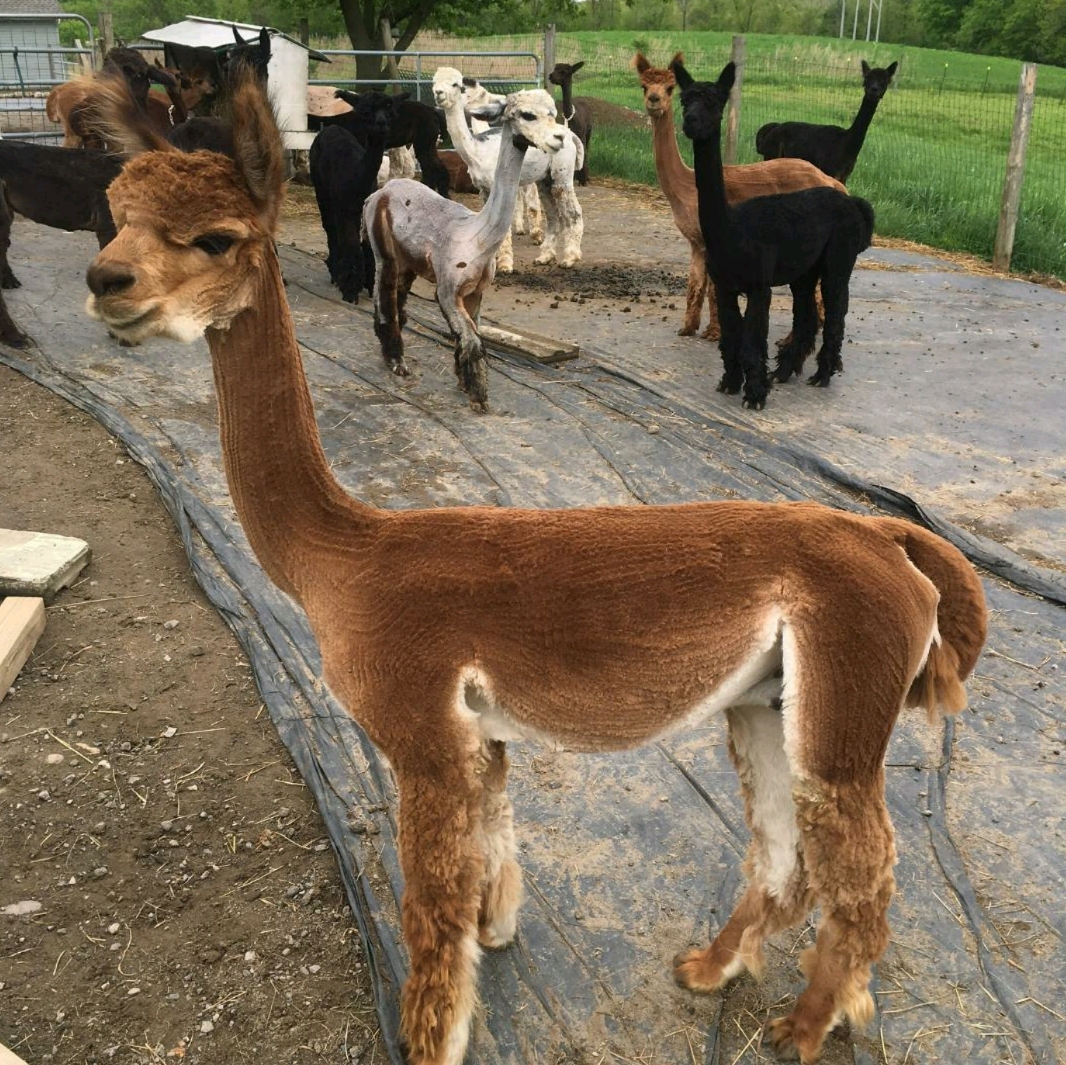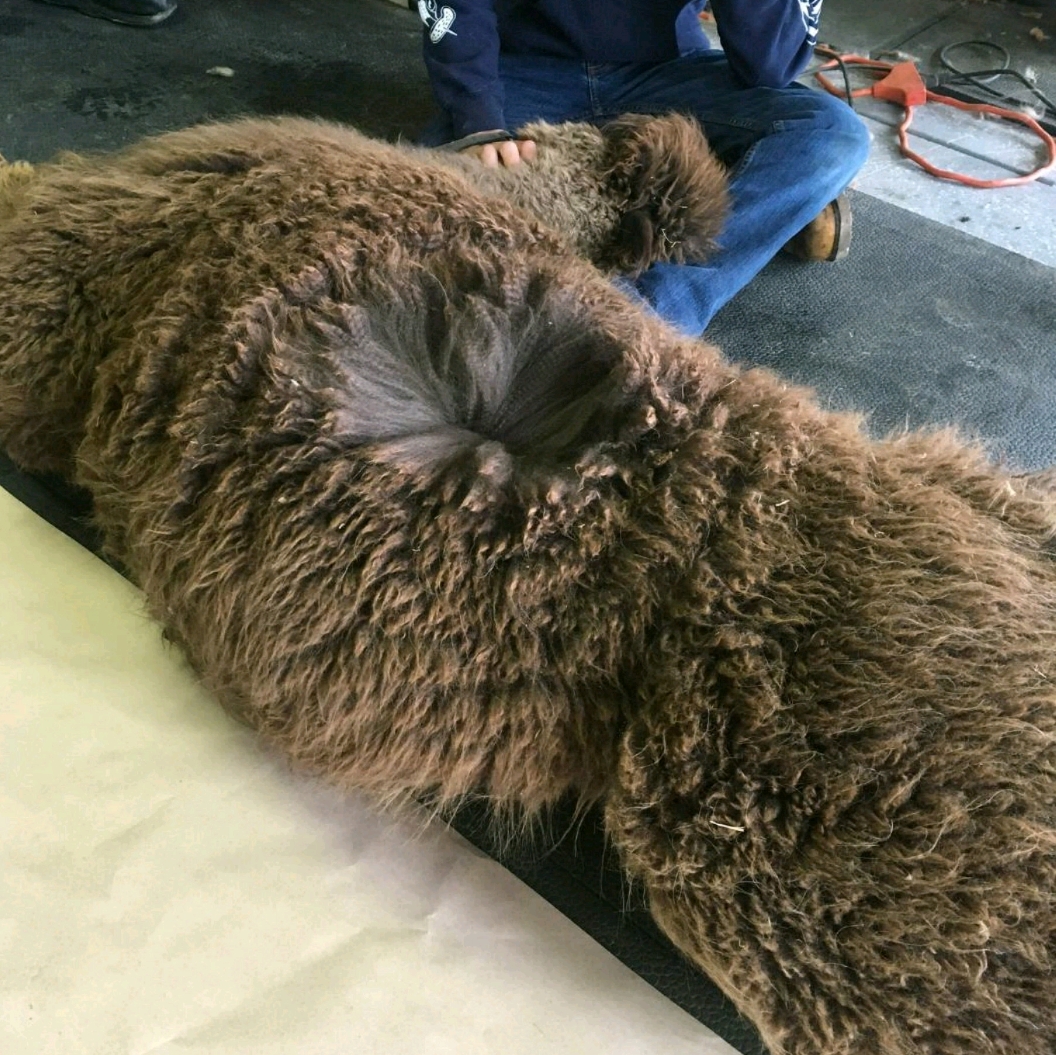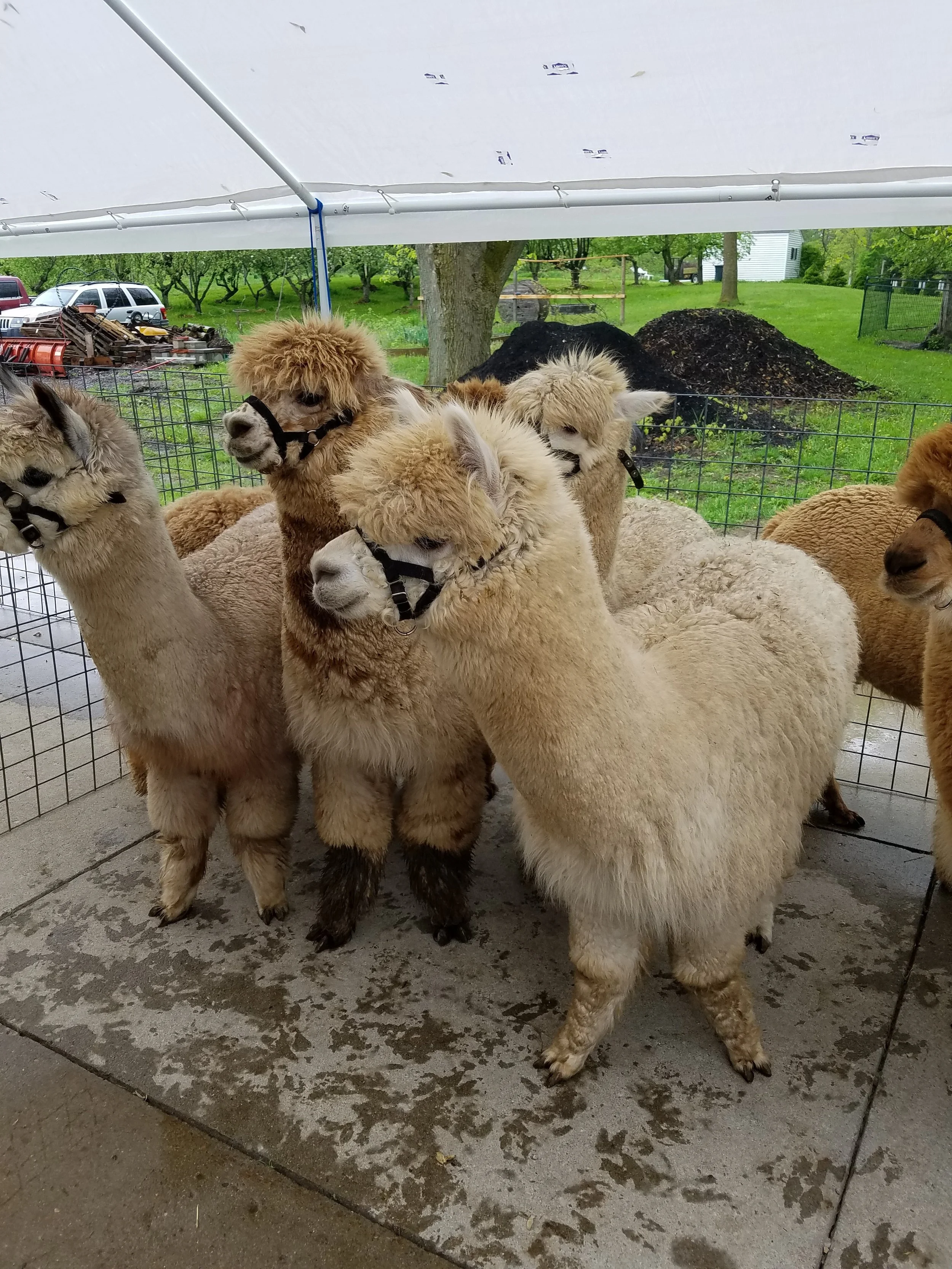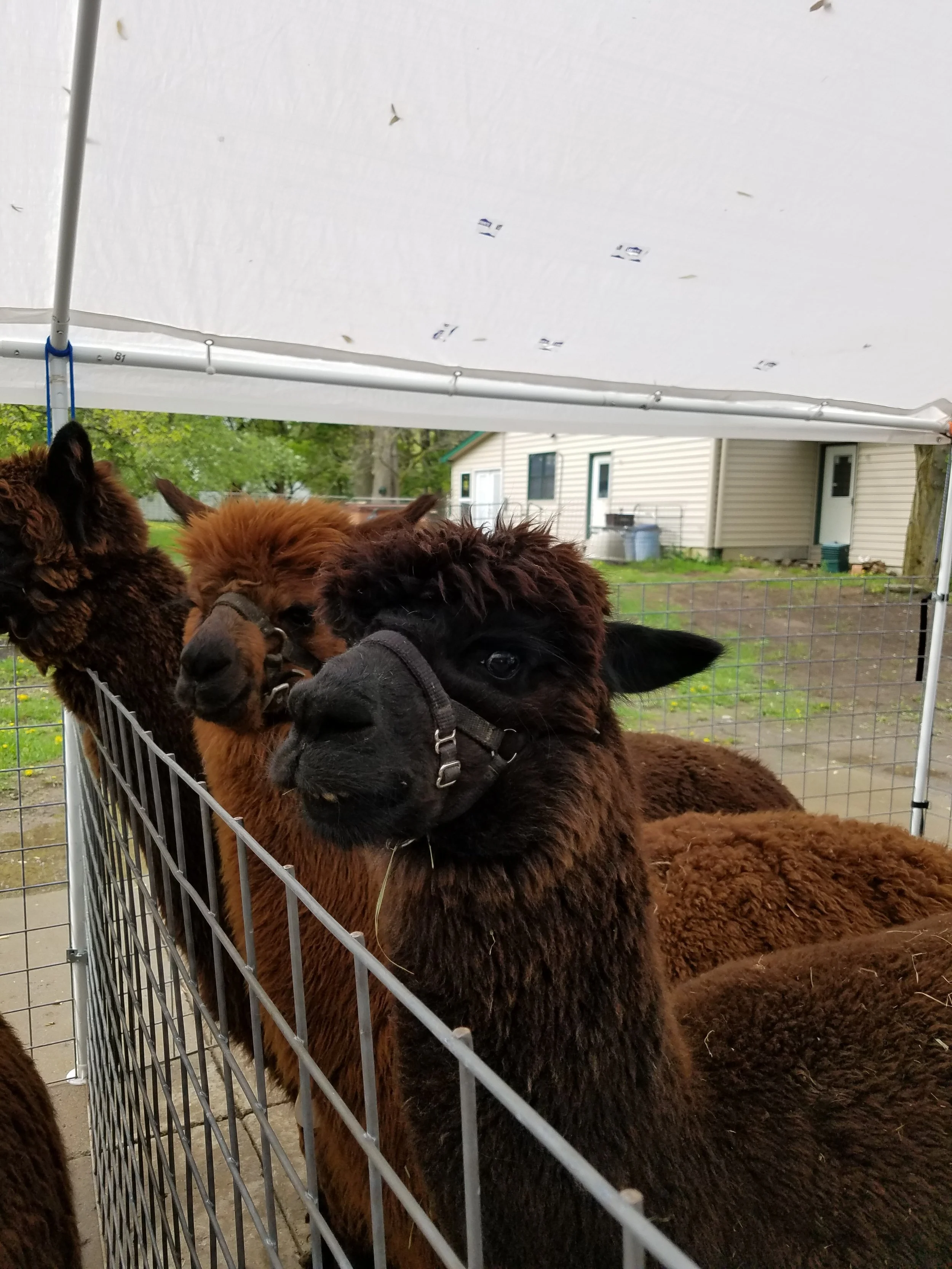Alpaca Shearing Day at Thistle Creek Alpacas!
Saturday May 19th I was fortunate enough to participate in the yearly alpaca shearing day at a local alpaca farm, Thistle Creek Alpacas. I was nervous going in even with the years of horse experience I have under my belt because I had no idea what to expect. I had never been around these fluffy animals before. Can I just say if you like farm life and animals and you ever have the opportunity to go help out at an event like this I highly recommend it! Once I got in the swing of things after a few rounds of an alpaca at my station I was in hog heaven! The owners of the farm, Jeanne and Grant Lang put the call out to their friends and family on the Thistle Creek Facebook page looking for volunteers. Even if I wasn't a spinner I would have gone because have you seen how adorable alpacas are? So Thistle Creek Alpacas is a 7 acre urban farm nestled in a little town outside of Buffalo NY called East Aurora. That day we sheared 72 alpacas! Well Joshua Klein the alpaca shearer did the shearing. He was incredible to watch. You could see the utmost care and respect he had for these animals and their safety and for our safety as well. I used to groom dogs but obviously alpacas are a whole different ball game. I was just fascinated by the whole process. He had 2 shearing stations set up about 6 feet apart. While he was working on an alpaca at one station, volunteers were prepping another at the other station. First step was to make sure your station was as clean as possible. The didn't want any fiber left from the previous alpaca shorn at the station because of color and micron differences. Then a fluffy alpaca was brought over. Each of their legs had to be tied just above what I would think is equivalent to our ankle. These ties were attached to a pulley system that when pulled splayed the alpacas' legs out and brought the animal safely to the ground. It looked like mid-evil torture but it is absolutely humane and for the alpaca's safety. They have such thick coats that the shears have to have very long sharp teeth on them to cut through. If an alpaca was able to struggle it would be very easy for it's skin to get caught in those teeth and get a horrible cut. Once the alpaca was secure Josh and his assistant who was there to hold and maneuver the animal into the appropriate positions started. The volunteers were there to move the fleece as it was coming off the alpaca and keep it in one piece. This is called the first cut or the blanket. It includes the back and sides of the alpaca. This is the softest fiber and can be made in to yarn for items to be worn next to the skin. The second cut is the neck and the legs. It is a little coarser so it is generally used for felting projects. The rest that is cut after this is discarded. Thistle Creek sends its fiber to a mill in Pennsylvania to be processed into yarn so the blanket is collected on a large sheet of brown paper, wrapped, and labelled with the alpaca's name. The second cut is collected in a small garbage bag and also labelled. Before it is sent off Jeanne skirts each fleece and removes any guard hairs which would be undesirable in yarns. I told her that I would love to come and help with that process so I can learn how to skirt a fleece. All in it was a wonderful day's work. I really enjoyed seeing the whole process through. Josh the shearer was just amazing. He learned his trade from real deal Aussie sheep shearers in New Zealand. He travels around the country doing his work following the shearing season through out the year.
You can check out Thistle Creek Alpacas on their Facebook page of the same name.

